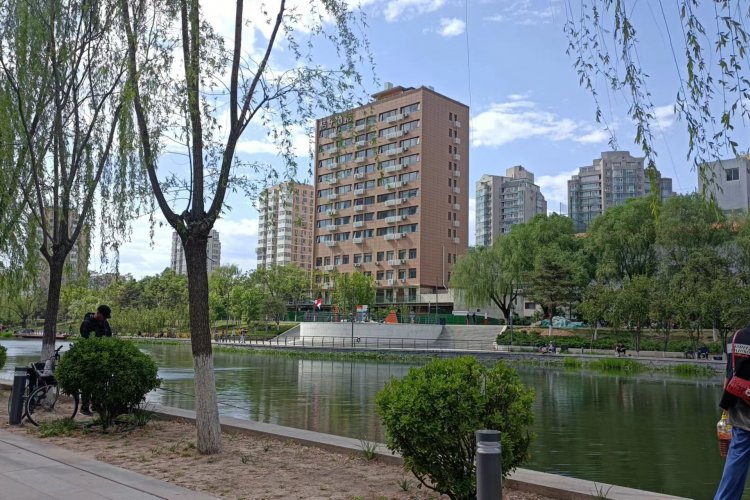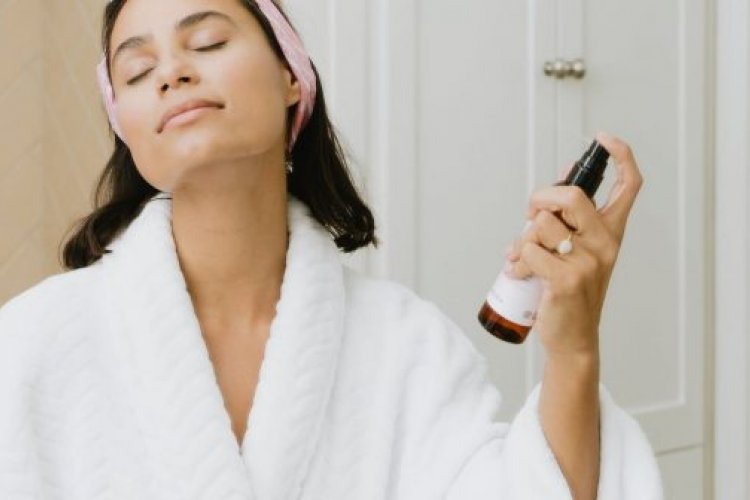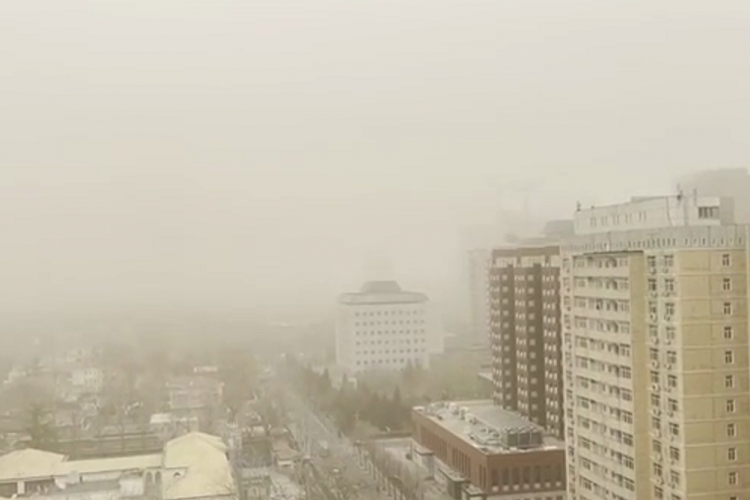Anti-Pollution Skincare: What It Is, How It Works, and Why You (Might) Need It
You know all about PM2.5 and PM10. You know when to change the filters of your air purifier. You’ve finally found a face mask that you like. You’ve bought air purifying plants for your home, and a personal AQI monitor in your bedroom. You’ve got this pollution situation in the bag, right? Well, not quite.
As the first line of defense against the environment (and your body’s largest organ), your skin is also a major target of air pollution. Studies have proven that exposure to tiny airborne pollution particles can damage the skin, speeding up cellular deterioration and cause dryness, sagging, wrinkles, and hyperpigmentation, or as South Korean beauty fans call it “polluaging.” That doesn't sound good.
It's therefore no surprise that anti-pollution skincare has become big business in recent years, but with the boom of products on the market, there has been a parallel boom in misinformation. Product reviews abound with confusing jargon and vague trademarked terms. Creams, oils, and masks contain “hydration protective layers” with “extracts to remove protein-stains” that “guard against pollutants” and “revitalize the skin at night” through “the principle of magnetic reflection.” But how exactly is the skin protected, guarded, and revitalized?

Anti-Pollution Skincare 101
There are three different ways to fight the damaging effects of air pollution on the skin: cleanse, block, and repair.
Cleanse your skin
Remove particles and chemicals before they can be absorbed into the skin further and do more damage. The obvious place to cleanse is the face, but you should really be cleansing any part of your skin that is exposed to the outside air. There’s no need to go crazy here; the usual gentle exfoliators, scrubs, facial cleansers, masks, and micellar waters that you would ordinarily use to cleanse your face will do the trick. You should note, however that beauty companies are slapping the words "anti-pollution" on regular cleansers in order to increase their price.
Words to look out for: None really, regular cleansers are fine.
Product examples: Clarins Extra-Comfort Anti-Pollution Cleansing Cream, Chanel La Mousse Anti-Pollution Cleansing Cream-to-Foam, ManCave Anti-Pollution Face Serum, Origins Clear Improvement Active Charcoal Mask.
Block
Physically prevent the pollutants from penetrating the epidermis with products that create a film. Products that can do this represent the most cutting-edge side of anti-pollution skincare technology, and didn't exist until fairly recently. They often contain SPF protection, and unfortunately, sometimes morally dubious and health-damaging skin-whitening ingredients. Regardless of what else they contain, they must contain some kind of film-creating compounds to really qualify as anti-pollution skincare.
Words to look out for: Metal binding complex, polymers, shield, barrier protection, film, chelate.
Product examples: Ren Clean Skincare Flash-Defence Anti-Pollution Mist, Elizabeth Arden Prevage City Smart SPF50 Hydrating Shield.

Repair
Help your body recover from the ill effects of pollution by introducing antioxidants which protect against the effects of free radicals (caused by pollution), or other ingredients able to improve the existing antioxidant defenses of the epidermis cells. Products that do this are generally in the form of a serum, lotion, or a mask.
Words to look out for: Antioxidants, repair.
Product Examples: Kypris Antioxidant Dew, Murad City Skin Overnight Detox Moisturiser, Bio-Extracts Anti-Oxidant Boost.
Most products on the market work by using a combination of these three different factors. Creams, mists, and lotions usually use the block and repair combination, while cleansers (exfoliants, micellar water) can also include reparative compounds. If you aren't sure which products are actually doing what, take time to read their descriptions carefully and pick up on any keywords we've listed.
But... Do you really need these products?
It depends on what you’re currently doing. If you’re already getting a good dose of antioxidants in your diet or via supplements, a product that ‘protects you’ with more antioxidants may be unnecessary.
Equally, if you’re already cleansing your skin daily, there is no need to change this aspect.
READ: Combat Dry Beijing Skin With These Artisan Creations
If however, you never wash your face before going to bed, don’t wear sunscreen, and can’t remember the last time you ate a piece of fruit, then yes, you need to step up your skin game. The good news is that you can immediately help out your skin without spending a yuan:

Protect your skin against pollution without using any expensive products at all
Hydrate – Drink plenty of water, and apply moisturizer daily. Your body can’t function without water, and the dryer your skin is, the easier the pollution penetrates.
Make your own cleanser – to remove the pollution buildup on the surface of the skin. We’re partial to a gentle oatmeal scrub.
Make your own face masks – that are rich in antioxidants, such as blueberries, raw honey, raw apple cider vinegar, and matcha powder.
Layer up cream and sunscreen – There is some evidence that the film created from these products alone is enough to trap pollution particles on the skin temporarily, allowing you to wash them off later.
Oh, and don’t forget, over 80 percent of visible signs of aging is due to sun exposure, so unless you’re wearing SPF every single day, your other ‘polluaging’ defensive measures will mostly be in vain.
READ: The Best Pollution Face Masks of 2019
More stories by this author here.
Email: annahartley@thebeijinger.com
Twitter: @its_annahartley
Instagram: @its_annahartley
Images: Unsplash, Giphy, Best of Both Worlds







